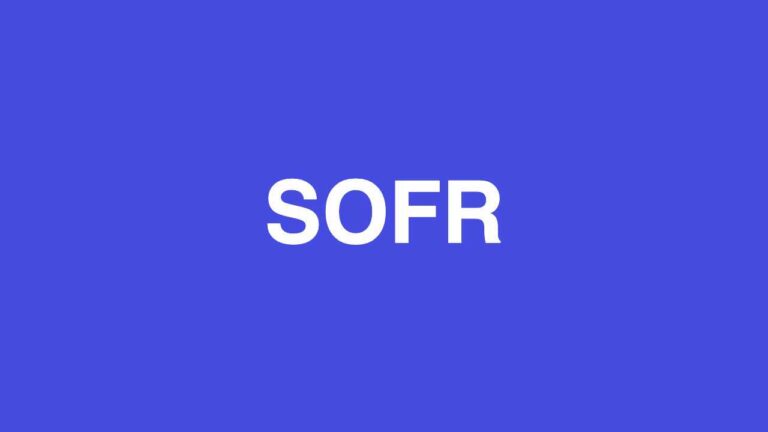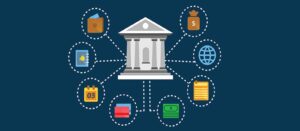Secured Overnight Financing Rate (SOFR): meaning, how it works & more

The global market has seen pivotal changes that have affected the general manner business is executed. One such change is the introduction of the Secured Overnight Financing Rate (SOFR) which has recently replaced the London Interbank Offered Rate (LIBOR) in the United States and most nations globally.
This article seeks to offer clarity on the meaning, style, and features of the SOFR.
Meaning of the Secured Overnight Financing Rate (SOFR)
The SOFR is an acceptable interest rate benchmark for global dollar-denominated credit and derivative transactions. The SOFR helps businesses foster a suitable interest rate using already established data from transactions contained in the US Treasury repurchase market.
The Secured Overnight Financing Rate (SOFR) replaced the London Interbank Offered Rates officially in January 2022, after the Federal Reserve Bank announced that the LIBOR would no longer stand as an acceptable interest rate for dollar-denominated derivative and loan transactions.
How the Secured Overnight Financing Rate (SOFR) replaced the LIBOR
From the year 1979 when the LIBOR was established, the LIBOR has become the most acceptable interest rate by investors and businesses from five major global currencies denominated loan and derivates transactions. Banks and investment houses adopted the LIBOR as the major interest rate for loan agreements.
The LIBOR was established through a calculation of the median interest rates borrowed among banks in the global space. The LIBOR influenced interest rates of the US dollar, the British Pound, the Euro, the Japanese Yen and the Swiss Franc.
The fall of the LIBOR began with the financial crises of 2008, from thereon, experts became highly concerned with the reliability of the LIBOR. The LIBOR ignored actual transaction figures and was largely based on estimated surveys from major banks global. In 2012, the veil of major global banks was lifted showing some of the most unethical practices being done by these major banks over time to gain from the LIBOR rates. The scandal of 2012 showed major banks had conspired to manipulate LIBOR rates to their benefit, investigations also showed that this conspiracy had occurred for over seven years before it was revealed in 2012. Major banks involved in the conspiracy were Barclays, JPMorgan, Citigroup, Deutsche Bank and others.
Eventually, the Financial Conduct Authority of the UK revealed that after 2021 major banks would no longer be required to submit interbank borrowing information. The UK’s Financial Conduct Authority also announced that LIBOR would be phased out completely by June 2023. Following the UK’s Financial Conduct Authority’s revelation and the interest rate manipulation fixing scandal by the major banks, the reliability of the LIBOR declined and a credible alternative was sourced by regulators and experts from countries across the world. To that end, the Federal Reserve System gathered a committee comprising experts and major banks in the United States together in 2017 to source an alternative to the LIBOR. The committee recommended the Secured Overnight Financing Rate (SOFR) be adopted for dollar-denominated loan and derivative contracts.
How the Secured Overnight Financing Rate (SOFR) works
The SOFR influences dollar-denominated loan and derivative transactions. The interest rate indicator works in line with the information derived from the US Treasury repurchase market- the banks and major financial institutions’ overnight loans are offered by investors, these loans are usually backed by treasury securities from the US government, making them more reliable to the lender.
The rate at which banks and major financial institutions borrow from other banks or high-net-worth individuals is set by the SOFR. The SOFR sets interest rates through the monitoring of the interaction of banks and major financial institutions lending money while using treasury bonds repurchase agreements (or simply repo) to secure the loan. The treasury bonds repurchase agreements allow banks to meet reserve and liquidity demands by issuing overnight loans while using treasury issued by the US government as collateral.
Differences between the Secured overnight financing rate and the London interbank offered rate
The LIBOR was met with varying scandals that affected its reliability among experts and industry players; the top of this scandal was major banks and financial institutions manipulating reports to influence LIBOR figures to their benefit. The SOFR was primarily introduced to curtail these challenges. Here are the major differences between the LIBOR and the SOFR.
1. Increased treasury repo trading
The treasury bonds repurchase agreements have pulled significant growth over the years, even surpassing interbank loans as relied on by the LIBOR. This offers increased trade activities that eventually create an authentic interest rate that reflects the true position of the market.
2. Observable data
The SOFR relies on accurate and observable data to come up with its final interest rate. This style differs from the LIBOR which relies majorly on estimates from previous borrowing interest rates to come up with a final report.
3. Reliance on treasury repo
This is perhaps the most significant difference between the two rating styles. The SOFR goes the extra mile to observe treasury repo and the trading activities are undertaken the previous day before coming up with a report.
Conclusion
The LIBOR is declining in use and would fully be faced out by July 2023. major economies have adopted various means to reporting interest rates, one of which is the secured overnight financing rate by the United States for dollar denomination transactions; others include the sterling overnight index average (SONIA) for the United Kingdom Pound, the Euro overnight Index Average (EONIA) for the Euro, the Mumbai interbank overnight rate (MIBOR) for the Indian Rupee, the Naira interbank overnight rate (NIBOR) for the Naira etc.
How many currencies used the LIBOR? Over 30 currency rates, including major global currencies from the US dollar, the British Pound, the Yen, Euro, and others. This spread and acceptance among varying currencies made it almost difficult to completely face out the LIBOR and is the major cause of the delay in the face-out to this day.
Who sets and publishes the SOFR? The New York Federal Reserve Bank publishes the rates for the SOFR as calculated for the day before.
Don't miss a thing. Follow us on Telegram and Follow us on WhatsApp. If you love videos then also Subscribe to our YouTube Channel. We are on Twitter as MakeMoneyDotNG.





